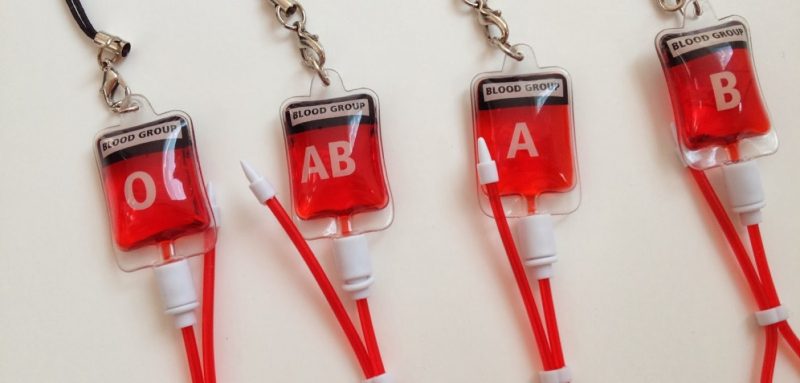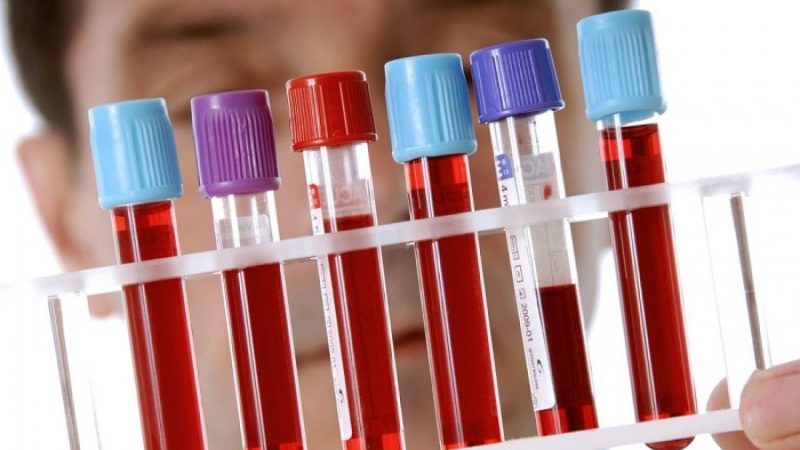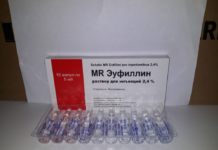Pregnancy is a kind of stress for the female body, coupled with great responsibility. During this period, even the most insignificant factors can affect the development of the child, not to mention such a serious indicator of a future successful pregnancy as the compatibility of blood groups of parents.
Material Content:
What is the compatibility of blood groups for conception
Four types of human blood are distinguished, which are usually divided into groups. Each of them is characterized by the content or absence of protein.
General classification according to the ABO system:
- I (0);
- II (A);
- III (B);
- IV (AB).
The letter in the name of the group corresponds to the antigen found in it.
- I (0) - blood group that does not have antigens A and B;
- II (A) - a group that contains antigen A;
- III (B) - a group with antigen B;
- IV (AB) - a group containing antigens A and B.
Rhesus factor (Rh) is one of the main indicators of blood. In the majority of people it is positive, in the smaller part - negative.
Parents should be screened before planning pregnancy to see if they are compatible. Sometimes blood groups diverge, as a result of which there are difficulties with conceiving a child and carrying it.
- If the mother is a carrier of group II, and the father has group III or IV, then the embryo may conflict with the mother.
- If the mother is a carrier of group III, then difficulties are possible with group II or IV in the father.
- If the mother is a carrier of group IV, then she has nothing to worry about, since her blood is compatible with any category.
Problems arise when a woman is the owner of blood type I, and a man is any of the three remaining.
Parent blood group compatibility table
| mother father | I | II | III | IV |
|---|---|---|---|---|
| I | + | - | - | - |
| II | + | + | - | - |
| III | + | - | + | - |
| IV | + | + | + | + |
Legend: “+” - full compatibility, “-” - conflict
As for the transfusion of blood, as well as its components, from one person to another, the process is called transfusion. Donor blood is stored in special airtight containers in refrigerators. Shelf life is 21 days. The transfusion procedure is carried out in case of acute loss of blood after a major operation, sepsis, coagulation disorder or Rh conflicts.
Blood transfusion methods:
- direct - from the donor to the recipient without intermediate steps (performed extremely rarely);
- Indirect - canned blood, and then transfused.
On a note! There are no universal donors, nor are there universal recipients.
Before the transfusion, the following activities are carried out:
- indications for blood transfusion are determined;
- recipient data are found out: blood type and Rh factor;
- the necessary blood is selected;
- a test is done to determine compatibility.
Transfusion blood group compatibility:
| Blood type | Can give blood to groups | May take blood groups |
|---|---|---|
| I | I, II, III, IV | I |
| II | II, IV | I, II |
| III | III, IV | I, III |
| IV | IV | I, II, III, I |
What you need to know about incompatibilities
A transfusion to a recipient of inappropriate blood for him can provoke a serious complication - blood transfusion shock. This is a kind of allergic reaction to a foreign antigen. It develops 2 to 3 hours after transfusion of inappropriate blood.
Symptoms of blood transfusion shock:
- cyanosis of the skin;
- shortness of breath, shortness of breath;
- soreness in the muscles and joints;
- prostration;
- tremor of limbs;
- heart palpitations;
- drop in blood pressure.
Incompatibility of maternal and child blood groups
The lack of compatibility between the blood of the mother and the baby can lead to severe fetal development disorders and difficult childbirth. In such women, pregnancy is more difficult due to the high risk of miscarriage. Also, parents with blood incompatibility quite often encounter difficulties in conception.
Pregnancy proceeds safely, provided that both parents have the same Rh factor. A positive outcome is also observed when a woman has a positive indicator, and a man has a negative indicator.
Difficulties arise in the opposite situation: the husband has Rh positive and the wife negative. In such a situation, there is a risk of the child inheriting a positive paternal rhesus, as a result of which a Rhesus conflict forms between him and the maternal organism.
When a child with a positive Rh factor develops in the uterus of a woman with the opposite Rhesus factor, there is a danger that his blood will enter the mother’s bloodstream through the placenta. Especially often this happens with pathology of the placenta. The pregnant body begins to defend itself against foreign blood cells, producing antibodies and thus performing a protective function.
Getting into the circulatory system of the fetus through the placenta, maternal antibodies destroy the red blood cells of the unborn baby. When they decay, bilirubin is formed. This substance provokes such a postpartum phenomenon as jaundice in infants. Also, the destruction of red blood cells causes anemia in the newborn. With this deviation, the number of red blood cells in the blood decreases, as a result, they do not transfer a sufficient amount of oxygen into the tissues and organs of the child. There is oxygen starvation - hypoxia. This deviation can cause severe fetal abnormalities - cerebral palsy, developmental delays.
When the first pregnancy occurs, the mother’s body practically does not produce antibodies, but with each subsequent gestation, the sensitivity of her blood to the positive red blood cells of the child will increase. Therefore, all further pregnancies will be more difficult.However, antibodies in the mother’s blood can begin to circulate earlier if she received a blood transfusion with a positive Rh factor.
Compatibility Test
To avoid problems with bearing a child, you should undergo a preliminary examination. It is very important to determine whether blood types are compatible for conception and what is their Rh factor.
Before the procedure, the blood characteristics of both participants are established, after which tests are carried out to reveal their compatibility.
They are made:
- according to the ABO system;
- using gelatin;
- Rh factor.
Test on the ABO system
Drops of blood from the recipient and donor are mixed in vitro. Five minutes later, the result is already known. If gluing of red blood cells did not occur, then donor blood is suitable for the recipient. The formation of clots indicates incompatibility.
Gelatin sample
How does it happen:
- The donor material is placed in a test tube in the form of one drop of blood, two drops of ten percent gelatin are sent there, and after that - 2 drops of recipient blood.
- The contents are mixed, then brought to a temperature of 48 ° C by heating in a water bath.
- Saline solution in the amount of 7-8 ml is mixed with the contents of the tube.
- The result is visible after 2-3 minutes. Donated blood is recognized as incompatible with the blood of the recipient, if gluing of red blood cells is observed.
Rhesus compatibility test
If by the ABO method a positive result is obtained, then you can proceed to the third method.
- two drops of recipient blood are mixed in a test tube with one drop of donor blood, then a 33% polyglucin solution is added (one drop);
- two types of blood are mixed with the drug for 5 minutes;
- then 3 ml of saline are poured, again everything is mixed well, giving the containers a horizontal position.
If the blood is compatible, the test tube will uniformly stain without gluing red blood cells.
To conceive and bear the embryo, you need to prepare in advance. Checking the compatibility of future parents should be the first step in planning a baby. If pregnancy proceeds without complications, then the conflict between the blood of the mother and the child is excluded.



















